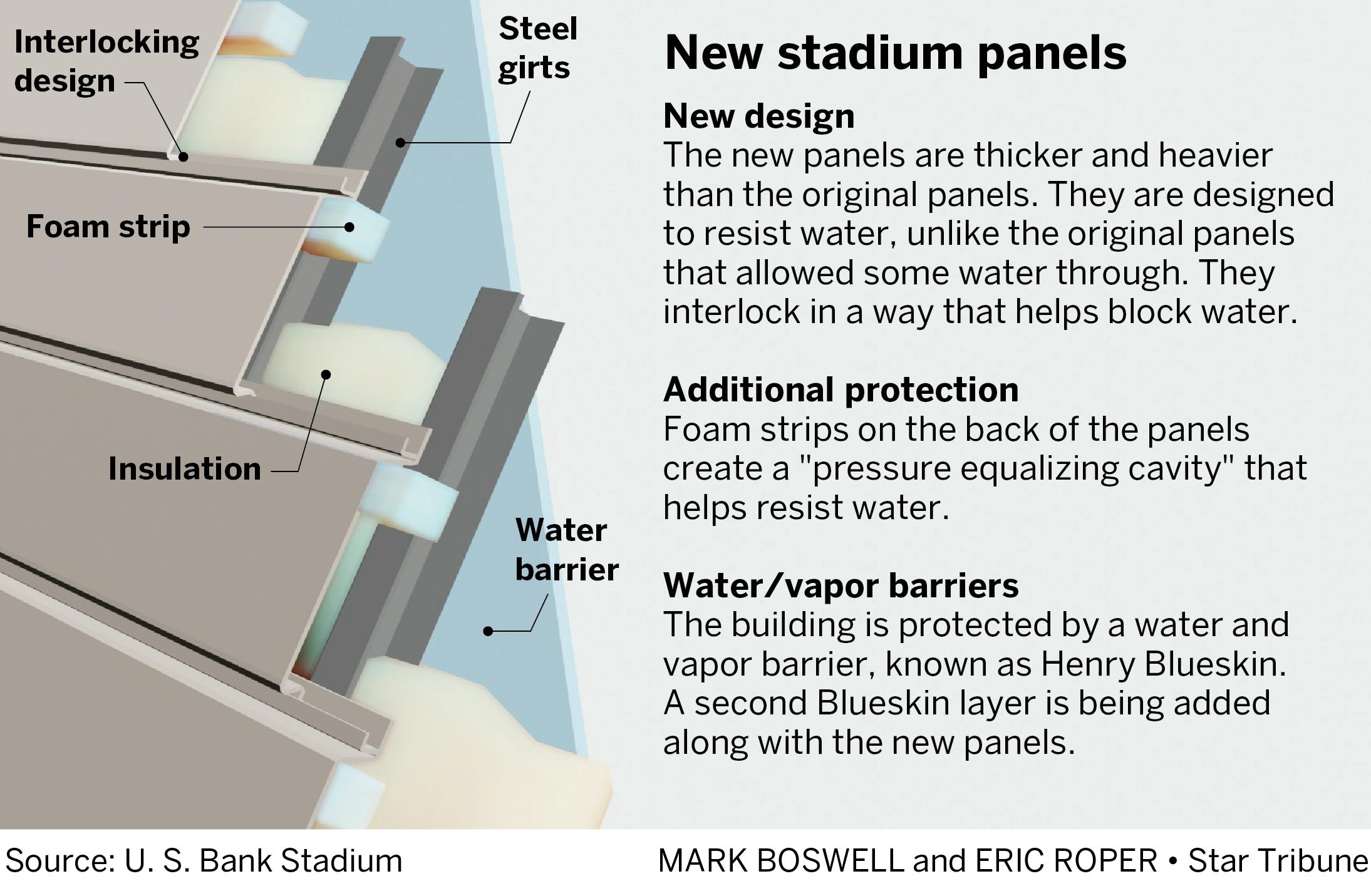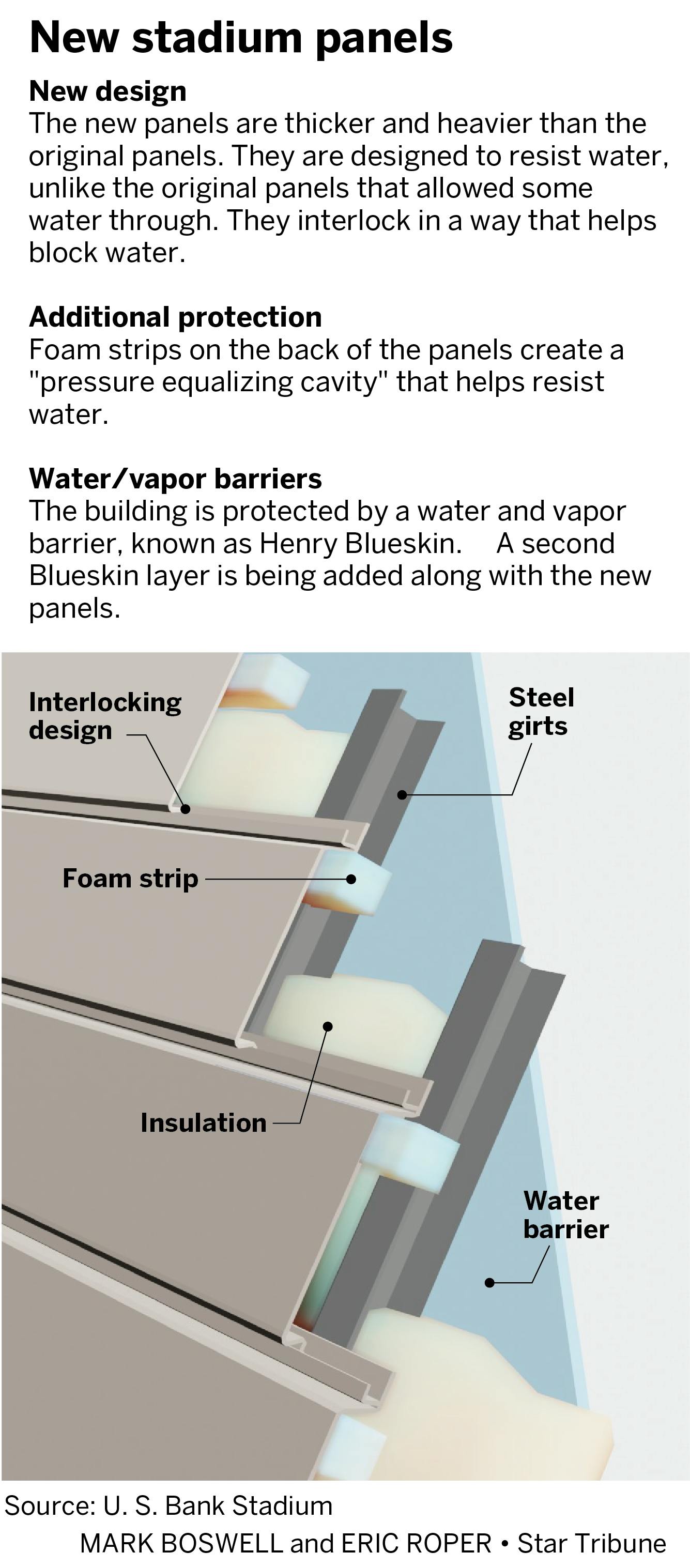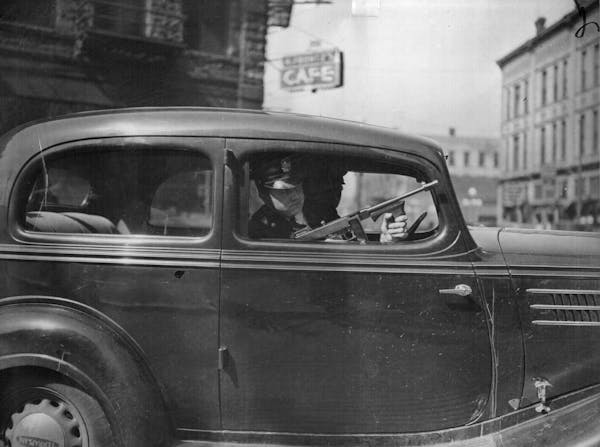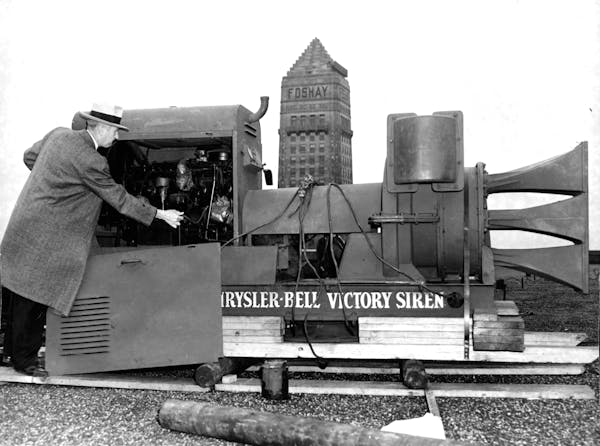Why is U.S. Bank Stadium in a constant state of repair?
Listen and subscribe to our podcast: Via Apple Podcasts | Spotify | Stitcher
If it seems like U.S. Bank Stadium has been under construction since before it opened, that's because it more or less has been.
Opened in August 2016 as the home of the Minnesota Vikings, the $1.1 billion building has been filled to capacity for a Super Bowl, an NCAA Final Four tournament and mega music events from Metallica to Taylor Swift.
But its distinctive dark siding has been an ongoing source of trouble. The 35,000 zinc panels that cover 250,000 square feet of the building's exterior had to be reinforced months before the grand opening because they flapped in the wind. Later, it was discovered that the building leaked — despite its elaborate protective shell.
From his Minneapolis residence, David Muench Huebert has had a front-row seat to it all. He sought more information from Curious Minnesota, the Star Tribune's community reporting project fueled by reader questions.
"U.S. Bank Stadium should be a landmark and living monument to Minnesotan exceptionalism, but it's always stripped of its fetching black (panels), exposing its insides with a bunch of lifts to get workers up to repair whatever it is the building managers can't get ahead of," he said.
He wanted to know what the problem is, and whether Dallas-based architect HKS or Golden Valley-based project manager M.A. Mortenson Comp. messed up.
"Is it cursed? Is it actually standard operating procedure to be under repair all the time? Does this cost money to the city and state that could have been avoided?" Muench Huebert asked.
Last question, first: No, taxpayers are not covering the $21.5 million cost of repairs to the publicly owned stadium. That money comes from a mediated settlement announced in February 2020 among eight companies involved in the design, engineering and construction of the building. The terms of that settlement are not public so it's not known how much each party is paying — and who is most at fault — but both Mortenson and HKS are parties.


As evidenced by the price, the repairs are extensive. All the zinc panels are being removed and replaced, along with the moisture barrier beneath them.
The Minnesota Sports Facilities Authority (MSFA) said the new siding would prevent leaks by adding "redundancies" that weren't part of the initial construction or design. The new panels are thicker and heavier, but otherwise appear similar and are made of the same material.
The original panels were designed to function as a rain screen with a watertight barrier behind them. This was called a "wet system." The new panels are considered a "dry system" with more robust water protection.
Water-resistant upgrades include a new interlocking design, foam pads to control pressure behind the panels and a second layer of Henry Blueskin — a water and vapor barrier.
The repairs are expected to be completed by Sept. 3, 2021, about a year-and-a-half after work began.
The Vikings, the building's main tenant, have two preseason games in August. They will play their first home game with a full house of fans on Sept. 26 against the Seattle Seahawks. Because of state restrictions on crowd size during the COVID-19 pandemic, the Vikings weren't allowed to have paying fans during the 2020 season.
If you'd like to submit a Curious Minnesota question, fill out the form below:
Read more Curious Minnesota stories:
Why isn't it a crime to punch someone in the face in pro hockey?
How did Minneapolis end up with a street named after Xerxes, a Persian king?
How did Minnesota become the Gopher State?
Are Minnesota's health care costs really the highest in the nation?
Why do gas prices vary so much around Minnesota?
Who decides when the I-35W bridge is lit in color, and how is it done?





